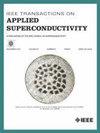Development of the Protection System for JT-60SA Superconducting Magnet Against Vacuum Degradation
IF 1.7
3区 物理与天体物理
Q3 ENGINEERING, ELECTRICAL & ELECTRONIC
引用次数: 0
Abstract
The JT-60SA project succeeded in commissioning test toward the first plasma in 2023 under a framework: the Satellite Tokamak Programme of the Broader Approach Agreement between EU and Japan (H. Shirai et al., 2016). JT-60SA is a tokamak type magnetic confinement device with a superconducting magnet system (Y. Koide et al., 2015) developed and operated at the Quantum Science and Technology institute (QST) in Japan. The magnet system consists of 18 Toroidal Field coils, 6 Equilibrium Field coils, and 4 modules of Central Solenoids, and all the coils are superconducting magnets. In the first commissioning, during 2020 - 2021, JT-60SA has experienced a discharge incident at the EF1 magnet (H. Shirai et al., 2024). As a conclusion of the investigation of the incident, it turned out that the insulation resistance of the magnet system was insufficient. Although the insulation was partly reinforced, the voltage holding under accidentally arising Paschen conditions was not improved enough for the recent operation (OP-1, 2023) (K. Hamada et al., 2024). To prevent the magnet system from discharging during vacuum degradation, a vacuum monitoring system must be prepared to detect vacuum degradation and ramp down the magnet current immediately in case of unexpected vacuum degradation. In this article, the development of the vacuum monitoring system, operational results, and the future plan of the system will be described.求助全文
约1分钟内获得全文
求助全文
来源期刊

IEEE Transactions on Applied Superconductivity
工程技术-工程:电子与电气
CiteScore
3.50
自引率
33.30%
发文量
650
审稿时长
2.3 months
期刊介绍:
IEEE Transactions on Applied Superconductivity (TAS) contains articles on the applications of superconductivity and other relevant technology. Electronic applications include analog and digital circuits employing thin films and active devices such as Josephson junctions. Large scale applications include magnets for power applications such as motors and generators, for magnetic resonance, for accelerators, and cable applications such as power transmission.
 求助内容:
求助内容: 应助结果提醒方式:
应助结果提醒方式:


